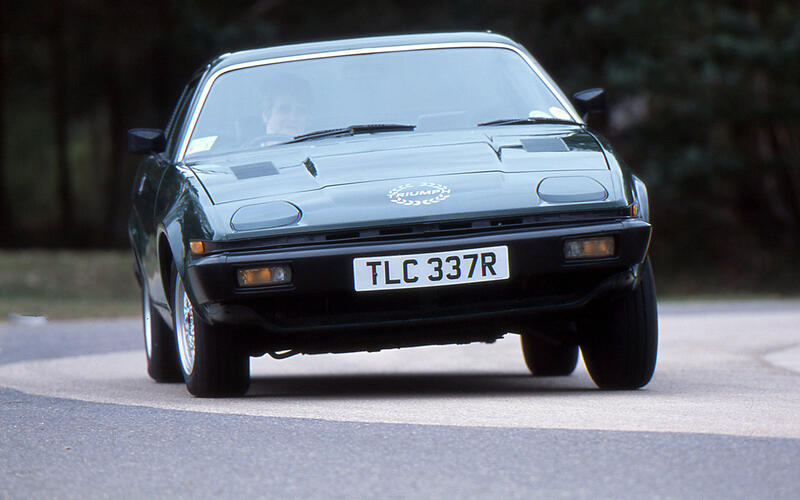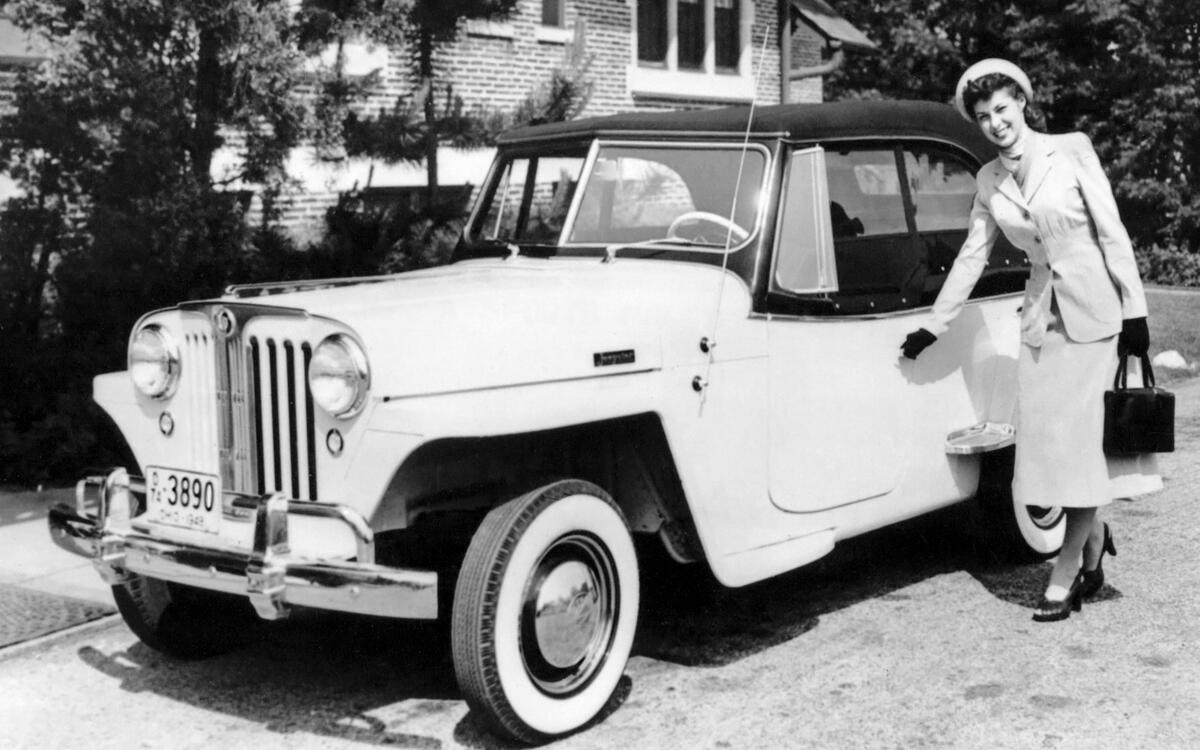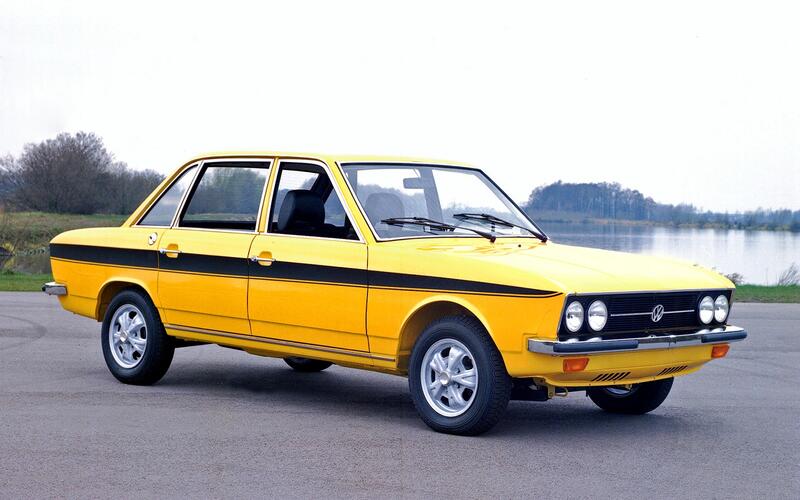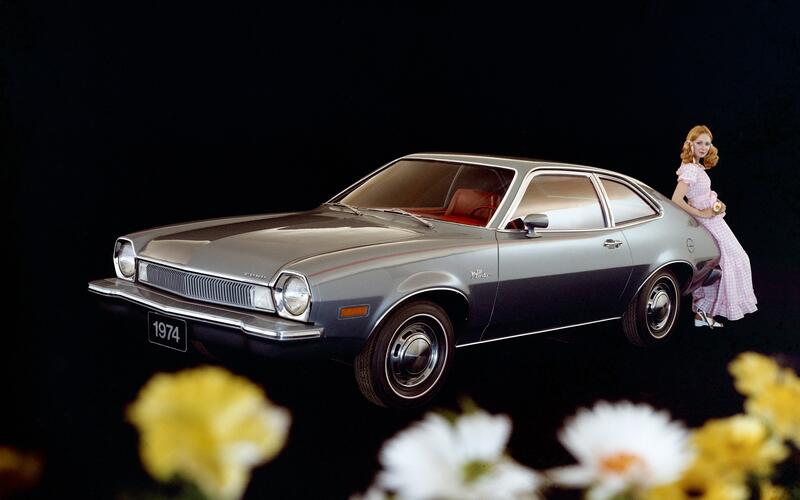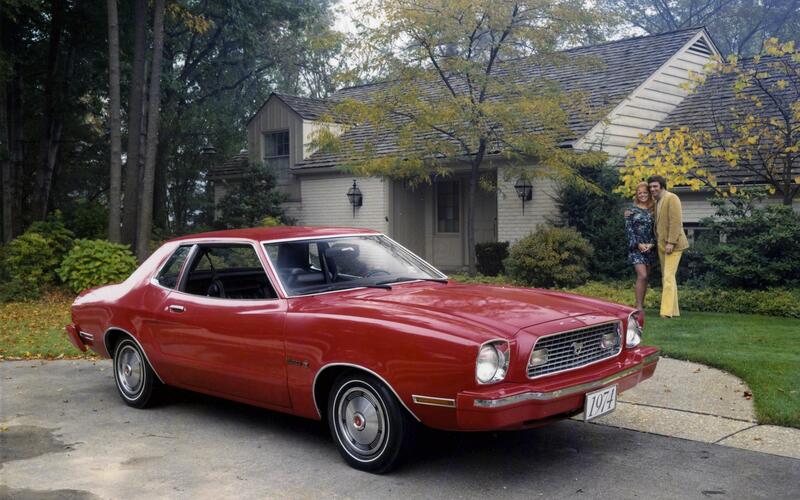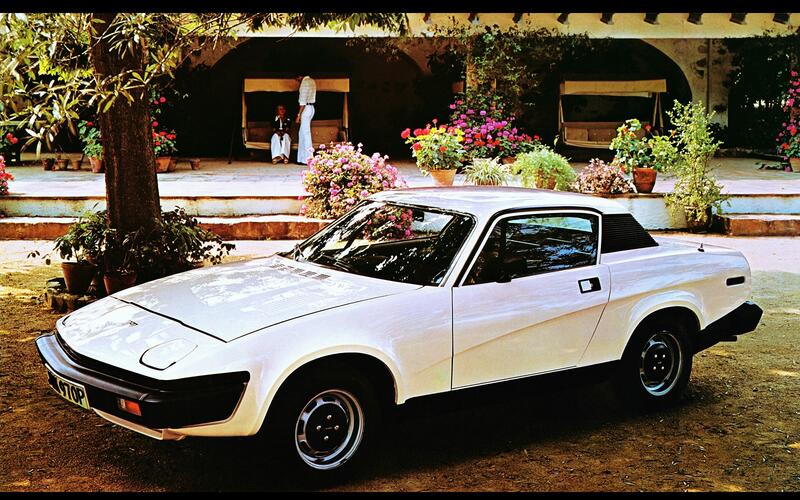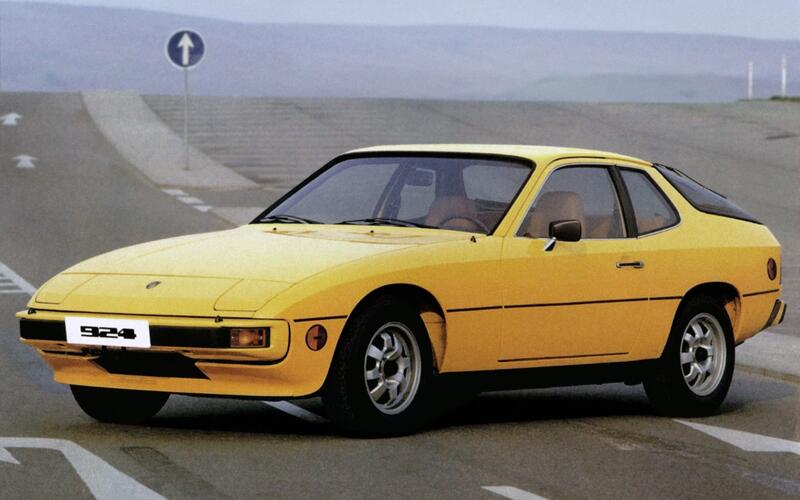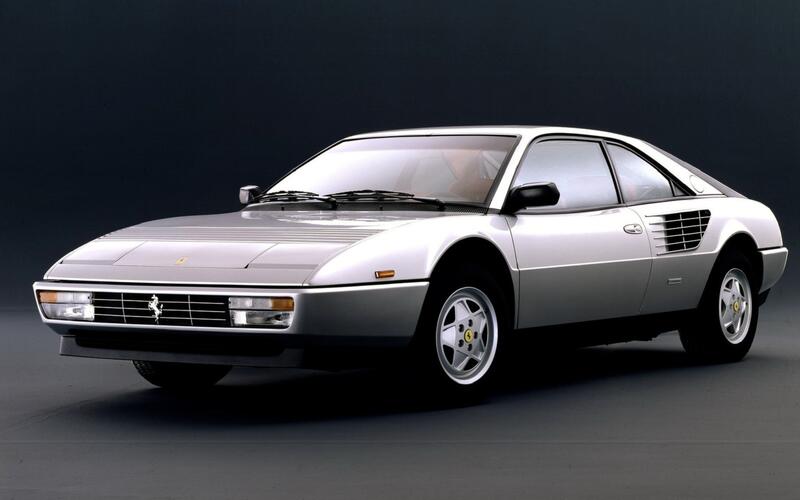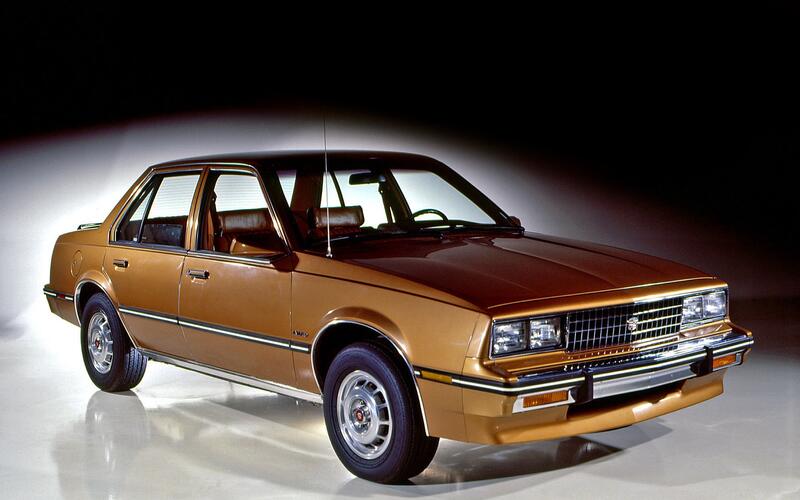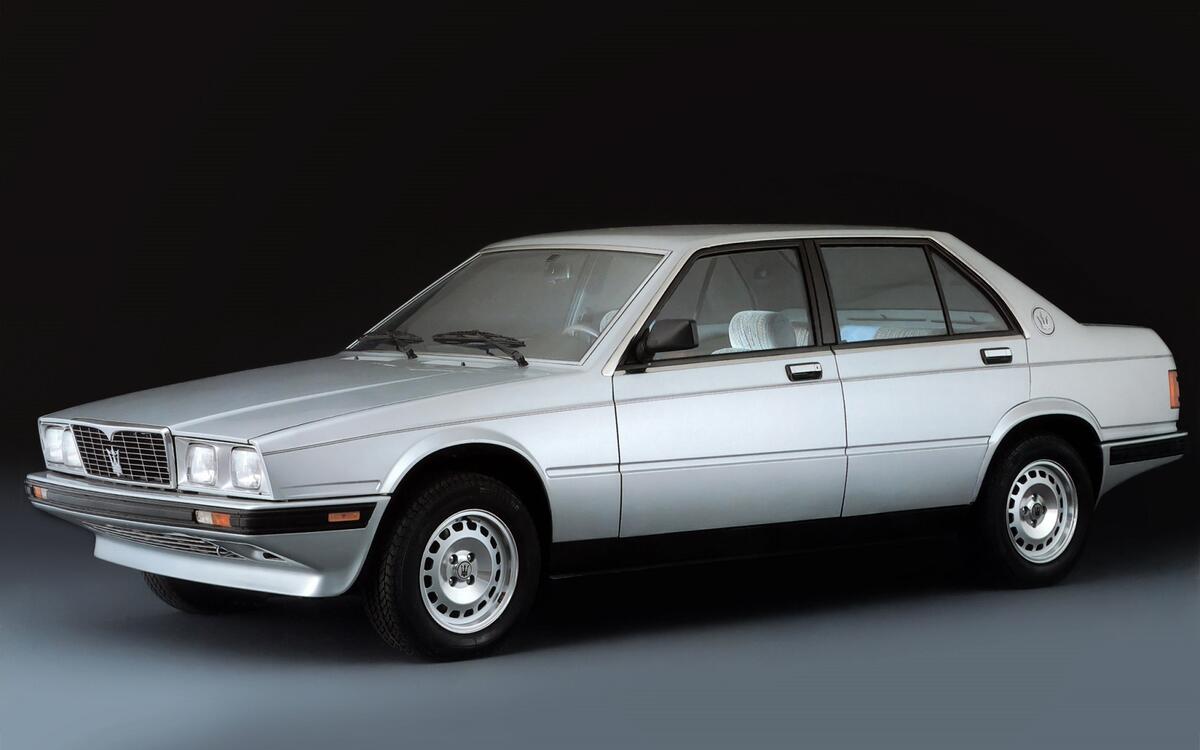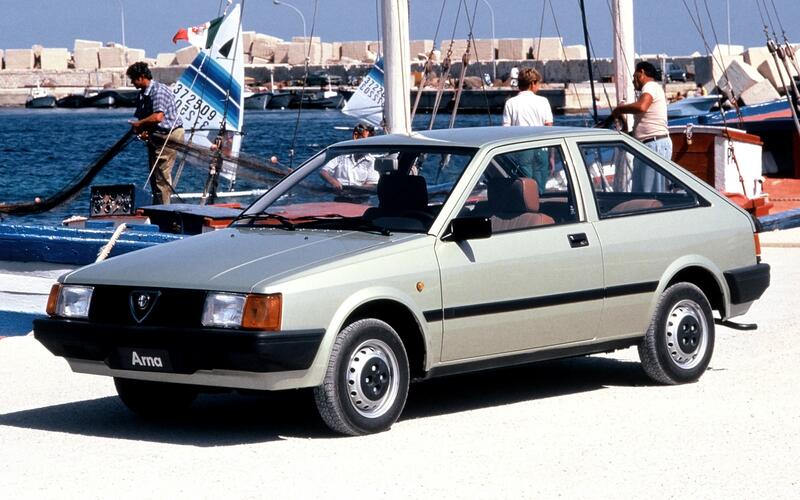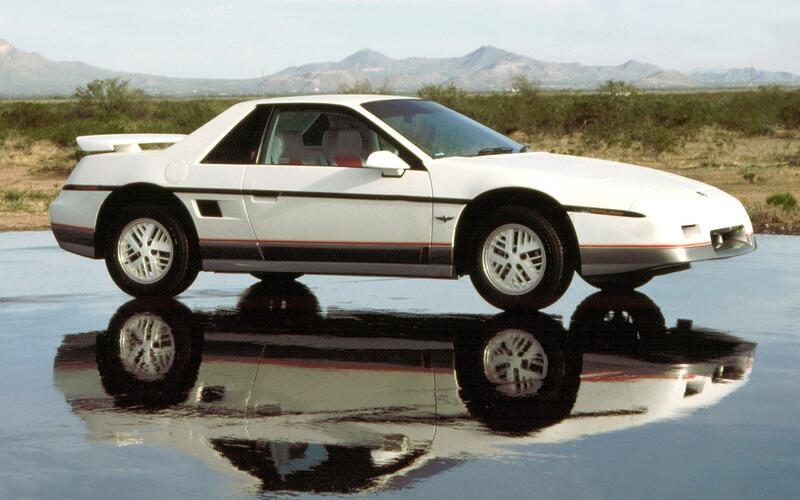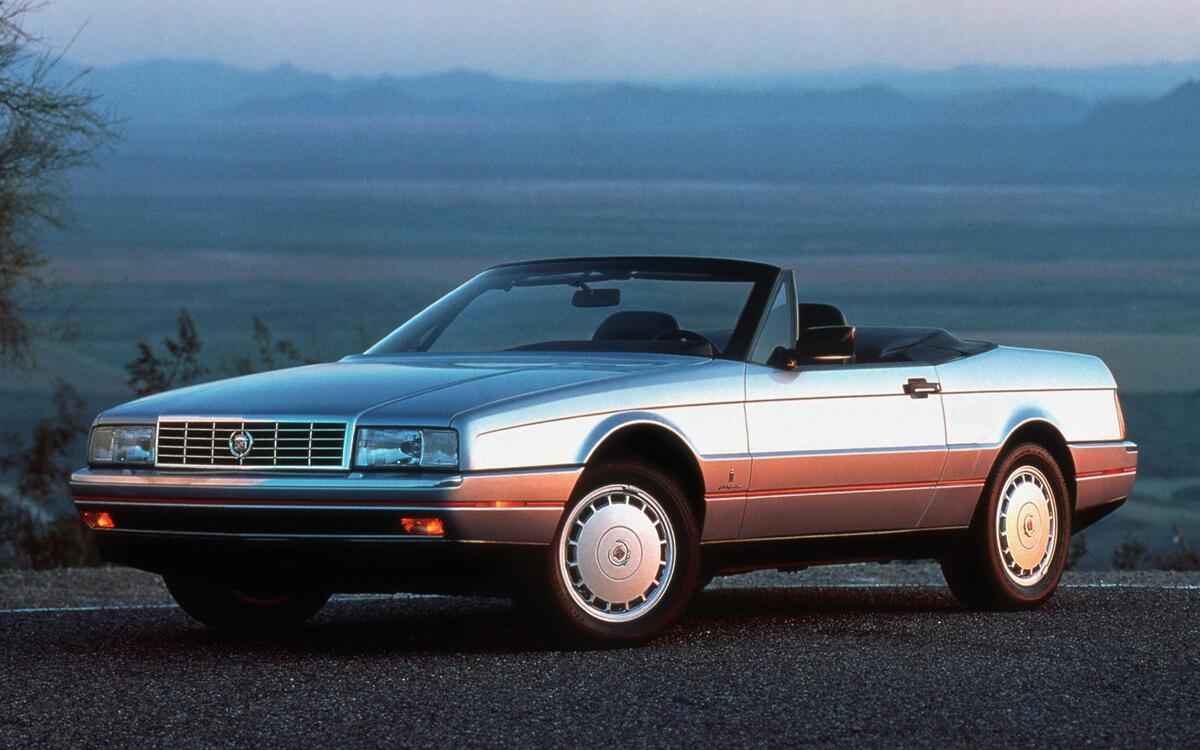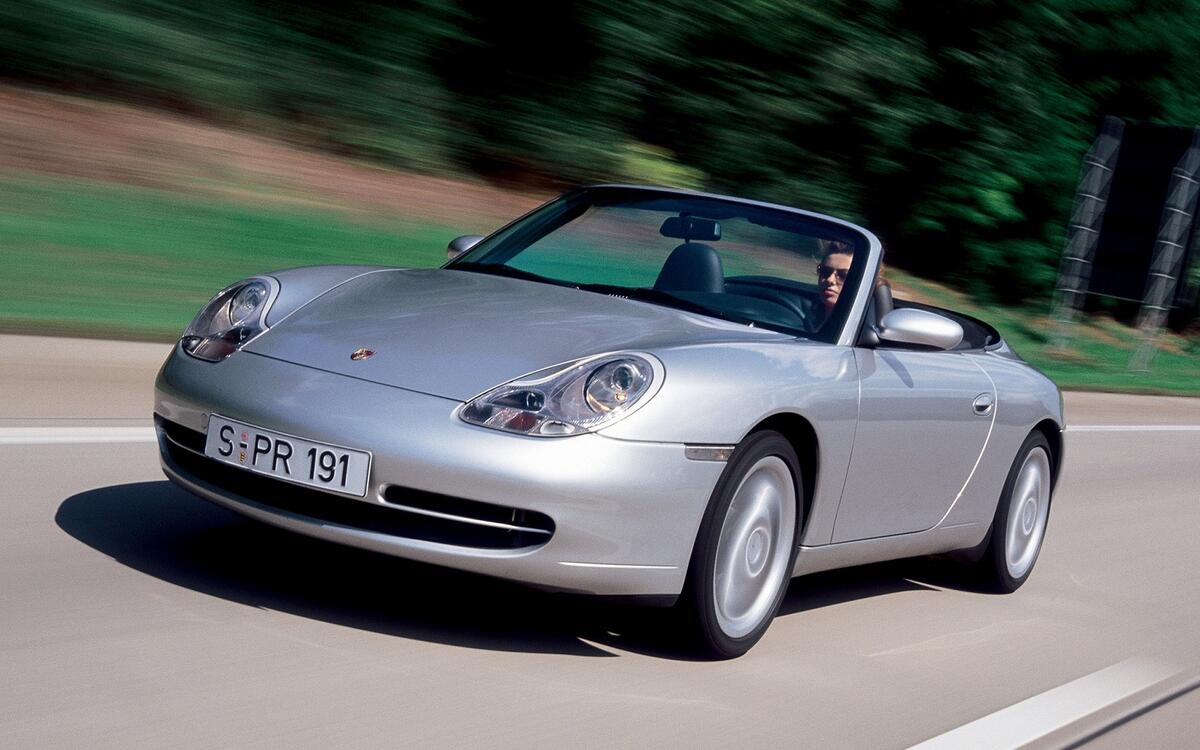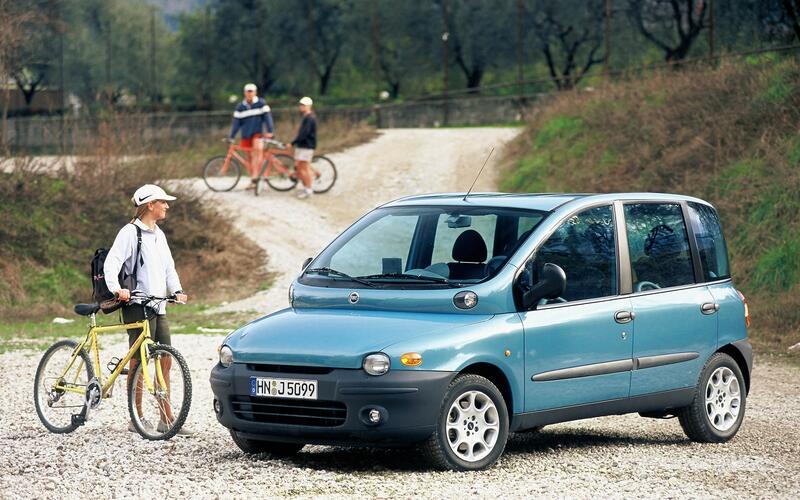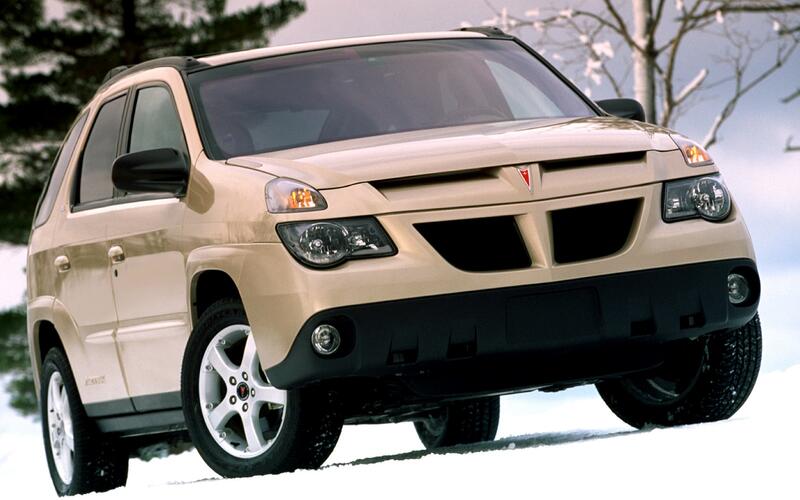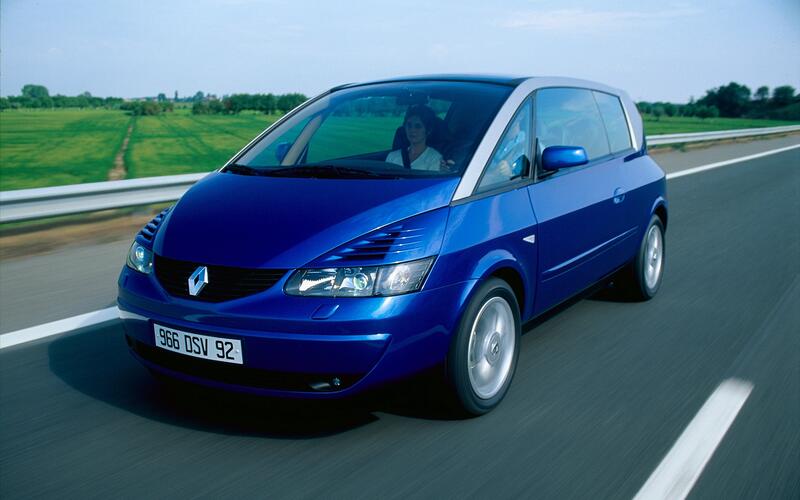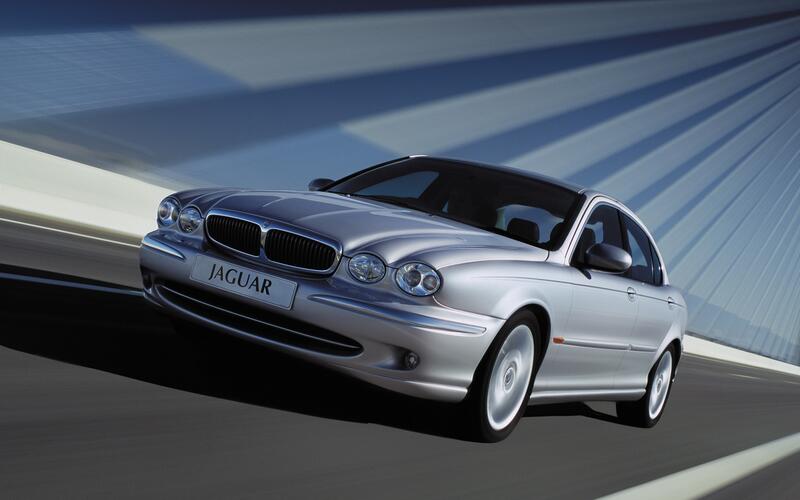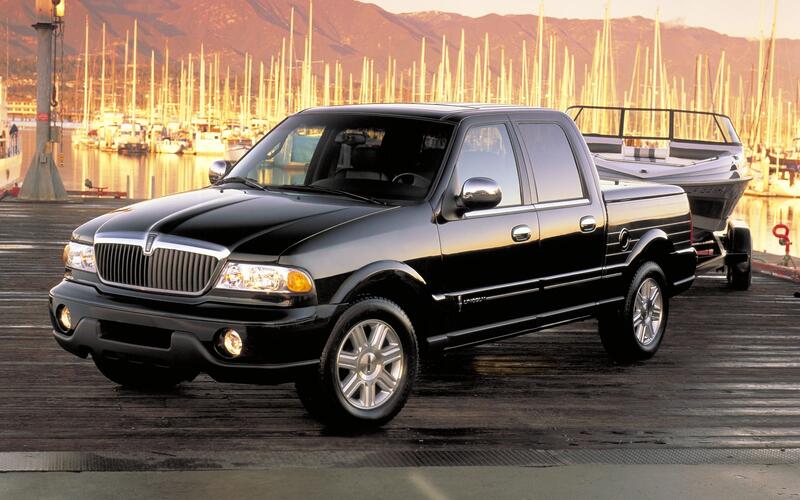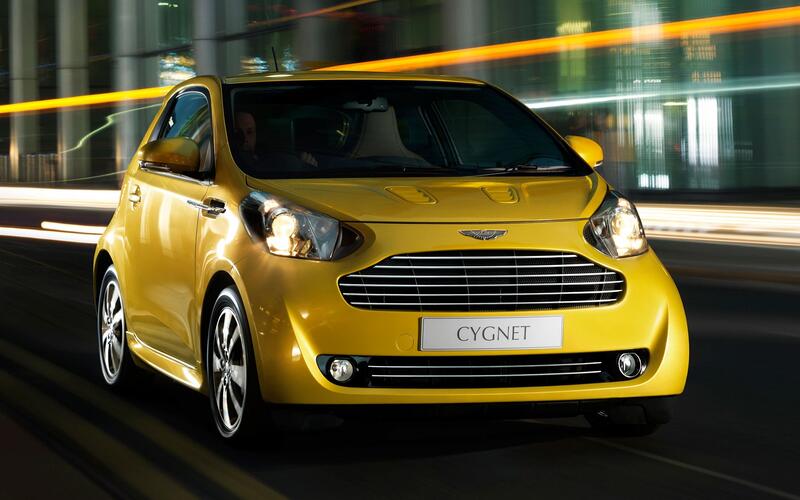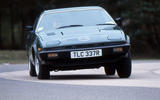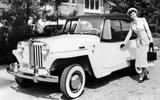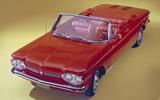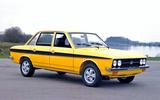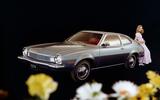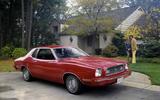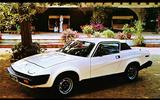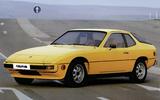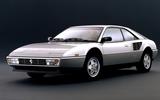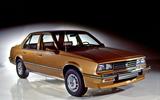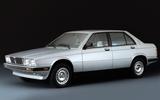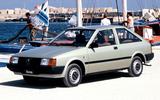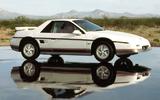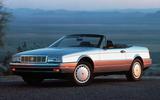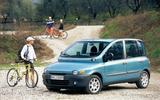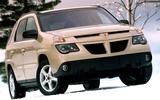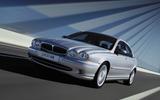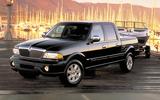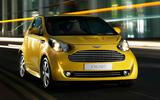 Slide of
Slide of
Even the most successful car companies miss the mark.
We can think of many instances in which automakers (usually cash- or time-strapped) fumbled as they attempted to replace a popular model. Sometimes they got ahead of themselves by trying to fill a niche that didn’t exist yet – and that, in some cases, was never created. The resulting models asked more questions than they answered and they stood out like a puddle of engine oil on a red carpet.
Here are some of the black sheep from the automotive world. Some of these cars will remain unloved for decades to come while others have become more enticing as they’ve aged:
 Slide of
Slide of
Willys-Overland Jeepster (1948)
Jeep parent company Willys-Overland worried suburbia-dwelling motorists wouldn’t buy a four-wheel drive off-roader like the WW2-derived CJ-2. It launched a more road-focused model named Jeepster in 1948 to lure a new set of buyers into showrooms. Offered only with rear-wheel drive and a small amount of ground clearance, the Jeepster was presented as a luxurious roadster; it was the exact opposite of the CJ-2.
Buyers who visited a Jeep showroom wanted a four-wheel drive vehicle so they ignored the Jeepster. Those who would have been interested in the model likely didn’t know it existed because Willys did a poor job of marketing it. Production ended after the 1950 model year though leftover examples were sold through 1951. Jeep made less than 20,000 examples of the original Jeepster. It resurrected the nameplate in 1966 as an alternative to the International-Harvester Scout.
 Slide of
Slide of
Chevrolet Corvair (1959)
The Corvair should have become one of Chevrolet’s best-selling cars during the 1960s. Released in 1959, it was a compact rear-engined alternative to the Volkswagen Beetle that was available in a wide variety of body styles including a coupe and a convertible. Buyers could even order a turbocharged model. Safety advocate Ralph Nader damned the Corvair in his 1965 book Unsafe at Any Speed. The title said it all: Nader argued the Corvair’s swing axle rear suspension made it highly dangerous and accident-prone.
The second-generation Corvair received an independent rear suspension but the damage to its reputation was already done. Chevrolet stopped production in 1969 and never made another rear-engined model.
 Slide of
Slide of
Volkswagen K70 (1970)
Volkswagen purchased NSU in 1969. The deal included all of the firm’s intellectual and physical property. What officials in Wolfsburg really wanted was NSU’s production capacity; they had no interest in the troublesome rotary-engine technology that powered the Ro80 and they even canceled a mid-range four-door model named K70 that was mere months away from its market launch. Volkswagen executives back-pedaled and gave the K70 the green light for production under one strict condition: NSU couldn’t have it.
Though it was developed entirely by NSU, the K70 made its debut in 1970 wearing Volkswagen emblems. It was the company’s first front-engined, water-cooled model and it was one of the more forward-thinking cars in its segment. And yet, it struggled to find its spot in the Volkswagen line-up. Entry-level examples overlapped with the rear-engined, rear-wheel drive 412 and upmarket variants competed in the same segment as the Audi 100. About 210,000 examples of the K70 had found a home by the time production ended in 1975. By that point, NSU was dying a slow death.
 Slide of
Slide of
Ford Pinto (1971)
The Pinto took Ford into a segment of the American market it had never been present in. As the company’s entry-level model, it competed against a growing list of economy cars imported from Japan and Europe. But Ford did its best to keep development costs in check and owners who had the misfortune of getting rear-ended discovered one of them.
The fuel tank was positioned between the Pinto’s rear bumper and its rear axle. It could get punctured during a rear-end collision, even one at relatively low speed, and the ensuing leak sometimes caused the car to catch fire. The Mercury Bobcat – a badge-engineered Pinto – suffered from the same problem.
The company’s legal troubles became increasingly serious and it ultimately caved. In 1978, Ford launched what was then the largest recall campaign in American history when it asked 1.5 million Pinto and Bobcat owners to get their car fitted with a protective shield and a modified fuel filler neck.
 Slide of
Slide of
Ford Mustang II (1974)
Still feeling the shockwaves of the 1973 oil crisis, Ford developed the Mustang II with an eye on fuel economy, not performance. It also chose to build the model on a version of the Pinto’s platform in a bid to make it smaller and lighter than the original.
This turned the once-mighty Mustang a shadow of its former self and the transformation nearly killed the nameplate. The Mustang II wasn't even offered with a V8 when it went on sale in 1974 and its top-spec engine was a V6 with 169bhp on tap. In comparison, the original Mustang offered up to 271bhp in its first year on the market.
 Slide of
Slide of
Triumph TR-7 (1975)
The TR-7 sadly ended Triumph’s line of fun-to-drive, attainable sports cars. Its love-it-or-hate-it wedge-shaped design was very much in touch with the styling trends of the 1970s. Looks alone didn’t kill the TR-7; reliability problems did. It took Triumph a few years to figure out how to build the TR-7 reliably. By the time it did, and by the time it added a convertible to the line-up, the model’s reputation was already trashed and there was no hope left of recovering it.
Production of the TR7 (and the later, V8-powered TR8) ended in 1981. Triumph closed in 1984; intriguingly the Triumph Cars brand name was one thing BMW kept hold of when it sold Rover in 2000.
 Slide of
Slide of
Porsche 924 (1976)
The 924 came to life as a joint project between Porsche and Volkswagen. The former needed a car to replace the 914 and the latter wanted a range-topping coupe. Volkswagen decided not to move forward with the project and instead released the Golf-based Scirocco. Porsche had to replace the 914 so it purchased the 924 project from Volkswagen and finished it on its own.
It was too late to weed out the Volkswagen roots. The 924 launched with a 2.0-litre four-cylinder engine shared with the Audi 100 and the Volkswagen LT and a four-speed manual transmission borrowed from the Audi parts bin. Production took place in a former NSU factory located in Neckarsulm, Germany.
The 911 and the 924 occupied opposite ends of the same spectrum. Many argued the 924 wasn’t a real Porsche because it was front-engined, water-cooled and it gave off whiffs of Volkswagen-ness. More powerful variants like the Turbo and the S later helped enthusiasts warm up to the model, and the Carrera GT 924 variant is especially well liked and valuable.
 Slide of
Slide of
Ferrari Mondial 8 (1980)
The Mondial 8 stood out as one of the most poorly-received cars ever to wear a Ferrari emblem. Critics complained the 205bhp, 3.2-litre V8 that the 2+2 Mondial launched with wasn’t powerful enough. Those willing to accept its performance quickly realized they couldn’t take advantage of it as often as they wanted because the Mondial was plagued with mechanical and electrical problems.
Ferrari fixed many of the Mondial 8’s problems when it released the Mondial QV in 1982. The later variants of the car (like the Mondial 3.2 pictured) were quicker and better built than the early models.
 Slide of
Slide of
Cadillac Cimarron (1981)
Cadillac turned to Chevrolet for help in expanding its line-up towards the bottom in a bid to compete against increasingly popular European imports like the Saab 900 and the BMW 3 Series. What followed was one of the biggest illustrations of badge-engineering gone wrong. Released in 1981 as a 1982 model, the Cimarron was a gussied-up Chevrolet Cavalier (a mediocre car to begin with, and related to the European Opel/Vauxhall Cavalier) that offered, to Cadillac’s credit, a long list of standard equipment.
It didn’t look, feel or drive like a Cadillac; even period ads referred to it as “Cimarron, by Cadillac” instead of the Cadillac Cimarron. It was the brand’s first four-cylinder car since 1914 and its first stick-shift since 1953. Executives predicted they could sell 50,000 examples of the Cimarron annually but sales peaked at 25,968 during the 1982 model year. The model taught Cadillac a valuable lesson in badge-engineering. John Howell, a Cadillac executive during the 2000s, famously kept a photo of the Cimarron captioned “lest we forget” on his office wall.
 Slide of
Slide of
Maserati Biturbo (1981)
The Maserati Biturbo should have gone down in history as one of the best-driving cars of the 1980s. On paper, it victoriously stuffed Maserati performance in a package that was smaller and more affordable than the Quattroporte.
The Italian firm failed in the execution phase and it delivered one of the most unreliable cars it has ever made. Mechanical and electrical problems were common, especially in early cars, and sales dropped when motorists realized what they were buying.
 Slide of
Slide of
Alfa Romeo Arna (1983)
The Volkswagen Golf’s success made government-owned Alfa Romeo green with envy during the late 1970s. The perennially cash-strapped firm couldn’t afford to develop a competitor from scratch so it teamed up with Nissan to enter the segment as quickly and cheaply as possible. The Arna was born in 1983 as a Nissan Cherry with an Alfa-specific grille and an Alfasud-sourced running gear.
The Arna routinely missed its sales targets. Even the Ti variant felt more Japanese than Italian and it was overshadowed by the more expensive 33. Executives surprisingly considered updating the model during the late 1980s but Fiat immediately canceled the project it when it took over Alfa in 1986.
 Slide of
Slide of
Pontiac Fiero (1984)
On paper, the Pontiac Fiero should have given European and Japanese sports cars a run for their money. It was developed as an affordable mid-engined sports car in the vein of the Fiat X1/9. In application, early models were a disappointment. Pontiac saved money by using suspension components shared with some of the cheapest cars General Motors (GM) offered during the 1980s and fitted a 2.5-litre four-cylinder engine rated at just 91bhp.
It didn’t handle or accelerate as well as its low-slung design suggested. Adding insult to injury, early examples exhibited an alarming tendency to catch fire. Pontiac righted many of the Fiero’s wrongs for the 1988 model year but the changes came too late.
 Slide of
Slide of
Cadillac Allante (1987)
In the 1980s, Cadillac sought to end the Mercedes-Benz SL’s dominance over the luxurious, two-seater roadster segment with its own high-zoot convertible named Allante. Pininfarina made Allante bodies in Turin, Italy, and air-freighted them to Detroit where Cadillac installed the running gear. Executives likely figured the Italian connection would give the Allante more prestige.
Cadillac charged $54,700 (about $122,000/£92,000 in 2020 money) for the Allante in 1987, the model’s first model year on the market. That year, the Mercedes 560 SL cost $55,300 (about $123,000/£93,000). The Cadillac didn’t drive as well as the SL because it had less power (168bhp vs 235bhp) and it was front-wheel drive. Early models also suffered from problems like a leaky top. Annual sales only crossed the 4000 mark in 1993, the nameplate’s last model year on the market.
 Slide of
Slide of
Porsche 911 (996-generation, 1997)
Porsche made significant changes to the 996-generation 911 introduced in 1997 and most of them were not welcomed by enthusiasts. It looked different than its predecessors because it borrowed styling cues like L-shaped headlights from the smaller Boxster. It also sounded different due to a flat-six engine cooled by water rather than air. Problems with the IMS engine bearings cemented its reputation as a lesser 911.
Emissions- and noise-related regulations forced Porsche to stay committed to water-cooling but the company gave the 997-generation 911 a design better aligned with tradition. Every 911 released since has been a careful evolution of its predecessor, not a revolution.
 Slide of
Slide of
Fiat Multipla (1998)
The original Fiat 600 Multipla released in 1956 divided the public’s opinion with its unconventional, function-over-form design. The born-again Multipla from 1998 was a lot less divisive; nearly everyone thought it troubling to look at. Those who judged it by its ungainly sheet metal missed out on a cleverly-arranged interior with six real seats and a minivan-like amount of space. Stylists were clearly onto something when it started the development process but they pushed the design envelope too far.
Fiat gave the Multipla a thorough face-lift in 2004 and kept building it until 2010. It even influenced a competitor, the Honda FR-V, but it remained hugely controversial until the end of its production run.
 Slide of
Slide of
Pontiac Aztek (2000)
Our look at black sheep cars wouldn’t be complete without mentioning the Pontiac Aztek. It was previewed by a concept car in 1999 and, by most accounts, it should have remained as one. It was a surprisingly versatile car but buyers couldn’t look past its gruesome front end and its off-beat proportions. It retired without a direct successor in 2005 and Pontiac shut down in 2010.
If being misproportioned wasn’t bad enough, the Aztek suffered from an identity problem within the Pontiac line-up. It was made in an era during which the firm was trying to renew its image. It bridged the gap between the 1990s, when the automaker was soul-less as Oldsmobile and Mercury, and the 2000s, when it briefly tried to embrace all-out performance. Buyers hadn’t caught crossover fever yet so no one knew what to make of Pontiac’s hatchback-SUV mash-up.
 Slide of
Slide of
Renault Avantime (2001)
Renault made the Avantime to explore what a two-door, upmarket variant of the Espace could look like. In hindsight, it was the answer to the question no one asked. From its leviathan-like proportions to its heavy double-hinged doors, the Avantime was generally regarded as an example of what not to do when designing a car, not as a trend-setter like Renault envisioned.
The Avantime went on sale at about the same time as the Vel Satis which confused potential buyers; which one was Renault’s true flagship? Sales were low and production ended after Matra – the firm which built it on behalf of Renault – closed its car-making division in 2003. Renault sold 8557 examples of the Avantime during a 22-month production run.
 Slide of
Slide of
Jaguar X-Type (2001)
Jaguar developed the X-Type while part of Ford’s Premier Automotive Group. Executives envisioned a luxurious entry-level model aimed at the BMW 3 Series and the Mercedes-Benz C-Class, the leaders of the class, but they started with an evolution of the front-wheel drive platform found under the Ford Mondeo. To make matters worse, they tried hiding the X-Type’s humble origins by launching it with a petrol V6 and four-wheel drive in an era where volume came from four-cylinder engines and rear-wheel drive, and, in Europe, diesel power.
The X-Type was innovative; it was one of the first cars fitted with a touchscreen. But Jaguar ultimately released the wrong product, on the wrong architecture, at the wrong time. Its disappointing sales in Europe and in America reflected that. Jaguar revisited the junior luxury class with the current XE, but that hasn’t sold as well as hoped either.
 Slide of
Slide of
Lincoln Blackwood (2001)
The Navigator SUV sold exceptionally well so Lincoln wanted to repeat its success in the pickup truck segment. The firm also needed to fend off competition from rival Cadillac, whose Chevrolet Avalanche-based Escalade EXT had caught everyone by surprise when it broke cover in 2001.
Starting with a four-door Ford F-150, Lincoln added a Navigator-esque front end and installed a much nicer interior. So far, so good. Unfortunately, the Blackwood was only available with rear-wheel drive and it was useless as a truck because its carpet-lined cargo box was topped by a plastic tonneau cover.
In America, the Lincoln Blackwood was offered only during the 2002 model year. The Mexican market got it for the 2003 model year, too. Its failure didn’t discourage Lincoln, though. The company released another F-150-based pickup truck named Mark LT in 2005 which managed to briefly outsell the Escalade EXT before falling flat on its face. Lincoln left America’s pickup segment in 2008.
 Slide of
Slide of
Aston Martin Cygnet (2011)
In 2011, Aston Martin’s line-up stretched from the limited-edition, 750 hp One-77 to an oddball city car named Cygnet. It was very evidently based on the Toyota iQ (sold as a Scion in America). Aston Martin admitted it re-badged Toyota’s smallest car to comply with CO2 regulations imposed by the European Union.
While it received a more upmarket interior than the iQ could ever hope to offer, it kept Toyota’s 96bhp 1.3-litre four-cylinder engine. Ulrich Bez, Aston Martin’s then-CEO, optimistically told the press he hoped to sell 4000 units of the Cygnet annually. Production ended in 2013 after the company made about 300 examples. It has steered well clear of the city car segment since the Cygnet’s humiliating demise. The few sold are quite valuable today; it is an Aston Martin after all. The late racing driver Sir Stirling Moss used to drive around London in one.
The cars their makers probably prefer to forget
Advertisement


